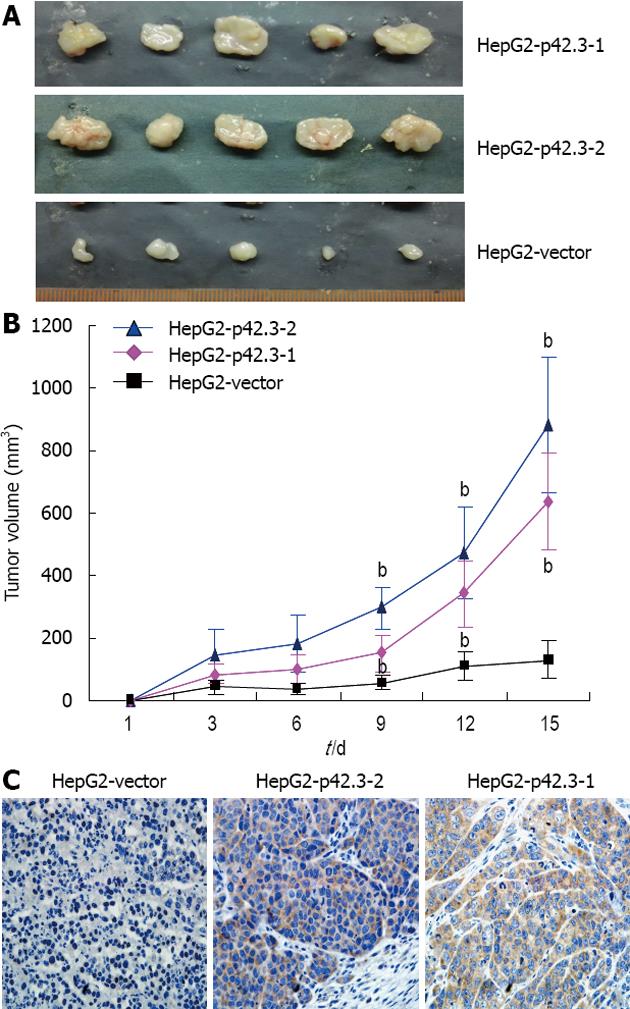Copyright
©2013 Baishideng Publishing Group Co.
World J Gastroenterol. May 21, 2013; 19(19): 2913-2920
Published online May 21, 2013. doi: 10.3748/wjg.v19.i19.2913
Published online May 21, 2013. doi: 10.3748/wjg.v19.i19.2913
Figure 4 Promotion of tumorigenesis by overexpression of p42.
3 shows statistical significance compared with the control in HepG2 cells. A: The tumor induced by HepG2-p42.3-1 and HepG2-p42.3-2 was much larger than that in the control; B: Over the course of 15 d, the tumor growth curve comparing HepG2-p42.3-1, HepG2-p42.3-2, and HepG2-vector cells revealed that p42.3-overexpressing cells grew faster (bP < 0.01 vs HepG2-p42.3-1); C: Immunohistochemistry staining was performed in xenograft tissues from tumors. p42.3 protein was detectable in xenografts that were formed by injection of p42.3-overexpressing cells, but not in the tumors developed from HepG2-vector cells.
- Citation: Sun W, Dong WW, Mao LL, Li WM, Cui JT, Xing R, Lu YY. Overexpression of p42.3 promotes cell growth and tumorigenicity in hepatocellular carcinoma. World J Gastroenterol 2013; 19(19): 2913-2920
- URL: https://www.wjgnet.com/1007-9327/full/v19/i19/2913.htm
- DOI: https://dx.doi.org/10.3748/wjg.v19.i19.2913









